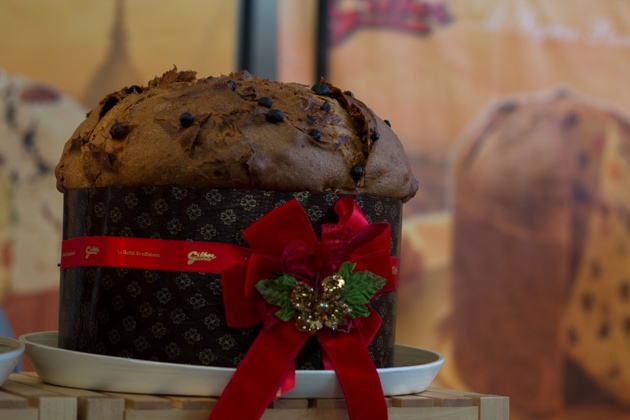
Panettone
Italian holiday foods are often symbolic as well as delicious. Dishes served on the day before a religious festival such as Christmas Eve, known as La Vigilia, are meant to purify the body before the rich holiday foods.
The Christmas season starts in Italy on 6 December with the birthday of Saint Nicola (the basis for Santa Claus, known as Babbo Natale in Italy). There is also the Feast of the Immaculate Conception on 8 December, celebrating the conception of Christ. On 13 December, Santa Lucia visits the northeast of Italy to give gifts, sweets and frollini di santa Lucia (biscuits shaped like piglets, ponies or flowers to the children). In Sicilia, Santa Lucia is honoured for bringing grain to the starving poor and is marked by serving cuccìa, a spoon pudding of wheat berries, ricotta and candied orange zest.
Christmas Eve (24 December) has a symbolic number of courses: 7 for the seven sacraments (visual rituals Jesus entrusted to the Catholic Church to symbolize God’s presence), 9 for the Trinity (the number 3 multiplied by itself- 3 symbolising the son (Jesus Christ), the father (God) and the Holy Spirit), 12 for the 12 disciples of Jesus, 13 (Jesus plus the 12 disciples) and 21 (the Trinity (3) multiplied by 7 for the seven sacraments).
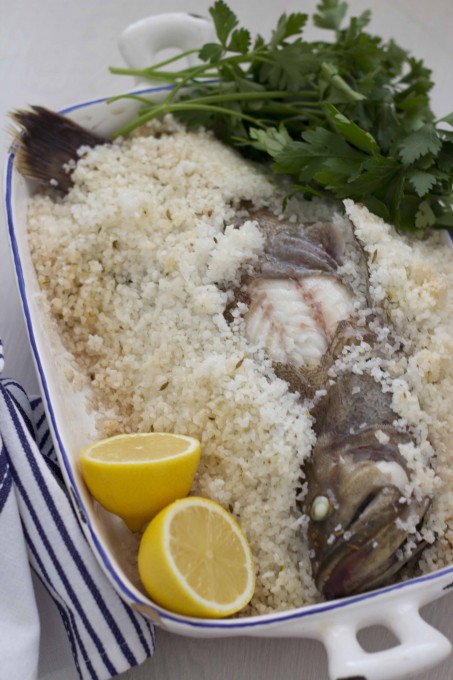
Branzino in sale (sea bass baked in a salt crust)
On Christmas Eve, many families eat fish courses for dinner (known as Il Cenone in southern Italy). Often eel (capitone) is served fried, grilled, pickled, roasted, spit-roasted or stewed as is baccalà often stewed or fried. Other typical fish dishes include brodetto (fish soup from Le Marche), pezzetti (battered and fried vegetables and ricotta from Rome), sautéed broccoli and shellfish from Naples, baby octopus and caponata (stewed sweet and sour aubergine from Sicilia).
In Lombardia and Piemonte, lasagna (pasta sheets layered with a sauce made from butter, anchovies, garlic, leeks, sage, rosemary, bay leaves, black pepper and/or parmigiano reggiano) is a traditional Christmas Eve dish. The pasta sheets symbolize the swaddling clothes of baby Jesus. In Naples they serve vermicelli with clams, mussels or razor clams. Romans eat spaghetti with anchovies.
The pinnacle of the holiday season is 25 December to celebrate the birth of Christ. Prior to the birth of Christianity, the day marked the winter solstice. As it was the darkest and shortest day of the year it was a pagan holiday to celebrate the birth of the sun god, Mithra. The Christians chose this day to celebrate the birth of the son of God, Jesus Christ, and the birth of the sun at the same time. For this reason Christmas breads, such as panettone (the most iconic Christmas cake, a fluffy sweetened bread flavoured with fruit and raisins originating from Milan), pandoro (a star-shaped yeasted cake flavoured with citron, lemon and vanilla from Verona) and pandolce (a dense cake rich with candied citrus zest, sultanas, pine nuts, anise seed and orange flower water from Genova), are round to symbolize the sun and its power to provide warmth and give and take away life.
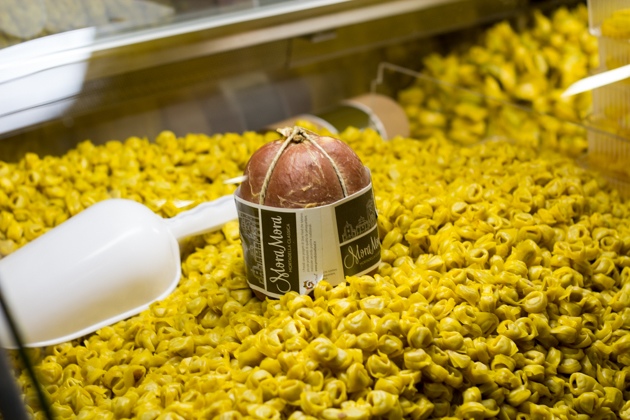
Tortellini
In northern Italy on Christmas day, the traditional first course is stuffed pasta (tortellini, sorir, cappellacci or cappelletti – different shapes and stuffing depending on the region) served in capon broth. The traditional main course was capon although in modern times, turkey is more common. In Lombardia the turkey can be stuffed with fruit and chestnuts; in Piemonte the stuffing is chestnuts, sausage, pork, eggs and cheese and in Lazio it can be breadcrumbs, eggs and parmigiano-reggiano cheese. In southern Italy, fish is served as the main course.
Regional Christmas desserts include spongata (a honey, nut and raisin cake from Emilia), cavallucci (spice and walnut biscuits imprinted with a horse from Siena), cassola (cheesecake from Rome), struffoli (towers of fried dough glazed with honey from Campania), cassata (sponge cake filled with sweet ricotta with candied fruit and chocolate and decorated with marzipan and candied fruit), buccellata (pastry ring filled with dried fruit, nuts and honey from Sicilia), cartellate (dough ribbons symbolizing baby Jesus’s sheets from Puglia) and dita degli apostoli (omelettes filled with chocolate or coffee flavoured ricotta symbolizing the fingers of the apostles from Puglia).
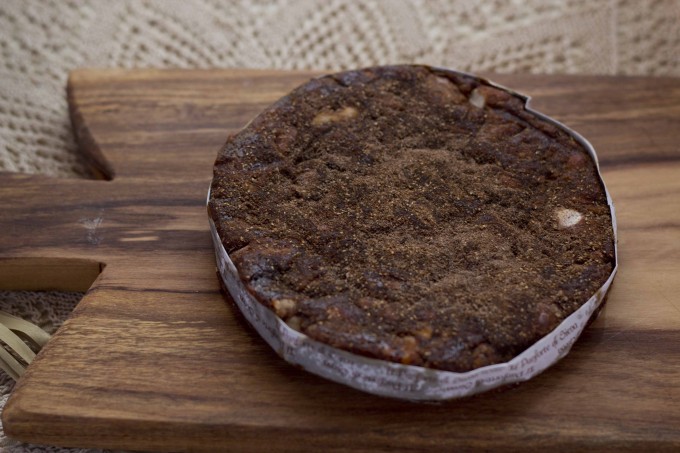
Pan pepato
Almond and honey torrone is the most traditional sweet. Christmas sweets with ancient origins are made from fruit, spices, nuts and honey. They usually have the word “pane” in the name (meaning “bread”) such as panspeziale/certosino (from Emilia Romagna), pangiallo (from Lazio), pani ‘e saba (from Sardegna), panforte and panpepato (both from Toscana).
In Naples, rinforzo (pickled vegetable salad with olives, anchovies and capers) is served daily between Christmas and the Epiphany (the first appearance of Jesus). The Epiphany on 6 January marks the end of the holiday season. The eve of the Epiphany is when la Befana, a toothless old woman, visits children and fills their stockings with toys, sweets and alphabet-shaped biscuits if they are good and coal shaped candy if they are bad.
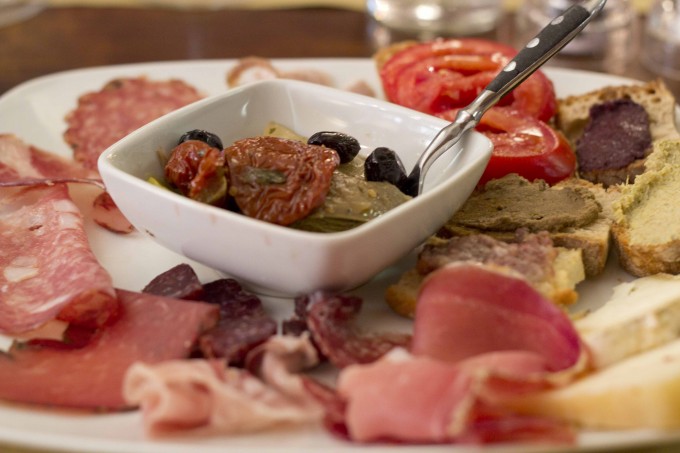
Salumi
In our house on Christmas Eve we serve smoked salmon and salt cod as a starter followed by ravioli as a first course and fish baked in a salt crust for a main course. The main meal of Christmas day consists of various salumi and cheese, cappelletti (stuffed pasta) in broth for a first course, roast goose with sour cherry and red wine sauce for a main course accompanied by roast potatoes and other vegetables. Dessert includes panettone, the star-shaped pandoro dusted with icing sugar and torrone.
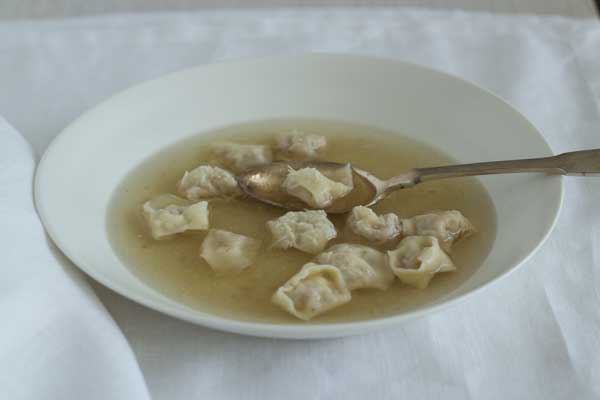
Cappelletti in brodo
Homemade cappelletti are more work but are completely worth the effort. We make these as a family and use the opportunity to chat and have fun. The children really enjoy being involved in turning the pasta machine and helping to fold the pasta.
Cappeletti in brodo (meat stuffed pasta in broth)
Primo (First course)
Serves 8
From Emilia-Romagna
Ingredients:
30 gms butter, unsalted
225 gms lean mixture of meat: pork loin, veal loin, and chicken breast, sliced 1/2 cm thick
1 egg
2 pinches nutmeg, finely grated
50 gms prosciutto, finely chopped
50 gms mortadella or beef bone marrow or a mixture of the two, finely chopped
100 gms parmigiano-reggiano cheese plus more for serving
Fresh egg pasta
Meat broth
In a small sauté pan, heat the butter over medium heat. When the butter has melted, add the meat mixture and turn the heat to low. Cook until the meat is cooked through but do not let it dry out (about 3 minutes each side). Remove it from the pan and let it cool. Reserve the cooking liquid in a small bowl.
In a medium sized bowl, mix together the egg, nutmeg, prosciutto, mortadella, bone marrow, and Parmigiano-reggiano cheese.
When the meat has cooled, finely chop it either by hand or in a food processor. Be careful not to overchop it. You want some texture, not mush. Add the meat to the egg mixture and combine well. Cover the mixture with cling film and refrigerate for at least an hour.
Roll your pasta to the last (thinnest) setting on your pasta machine. Cut the pasta sheets in half if they are getting too long. Flour your work surface lightly and keep the pasta you are not currently working with on the floured surface. Cover the pasta with a damp towel to keep it moist. Flour a baking sheet and have another damp tea towel ready.
For this part it is best to enlist the help and companionship of friends and family. This will transform the process from work to fun. Take one sheet of pasta and using a paring knife or pasta cutter cut it into 3-5 cm squares. Take a 1/4 teaspoon of filling and place in the centre of a square. Fold the pasta over so that the corners meet and form a triangle. Pinch the edges shut pressing out any air inside. Sit the filled pasta up with the center corner up and bring the two bottom corners together. Fold the top corner back slightly. If your pasta is not closing well as it is too dry, dip your finger into the reserved meat cooking liquid and moisten the edges to close. Place finished cappelletti on the floured baking sheet and cover with the damp tea towel.
Bring the meat broth to a simmer. In a separate sauce pan, bring 4 litres of water to a boil over medium heat with 1.5 tablespoons of salt. Add 30 cappelletti to the water and turn the heat to low, do not let the water boil. You can add some cold water to the pan to prevent this. You will need to cook the cappelletti in batches. When the cappelletti float, remove with a slotted spoon to the serving bowls. Ladle the meat broth into the bowls. Sprinkle Parmigiano-reggiano cheese over top and serve.
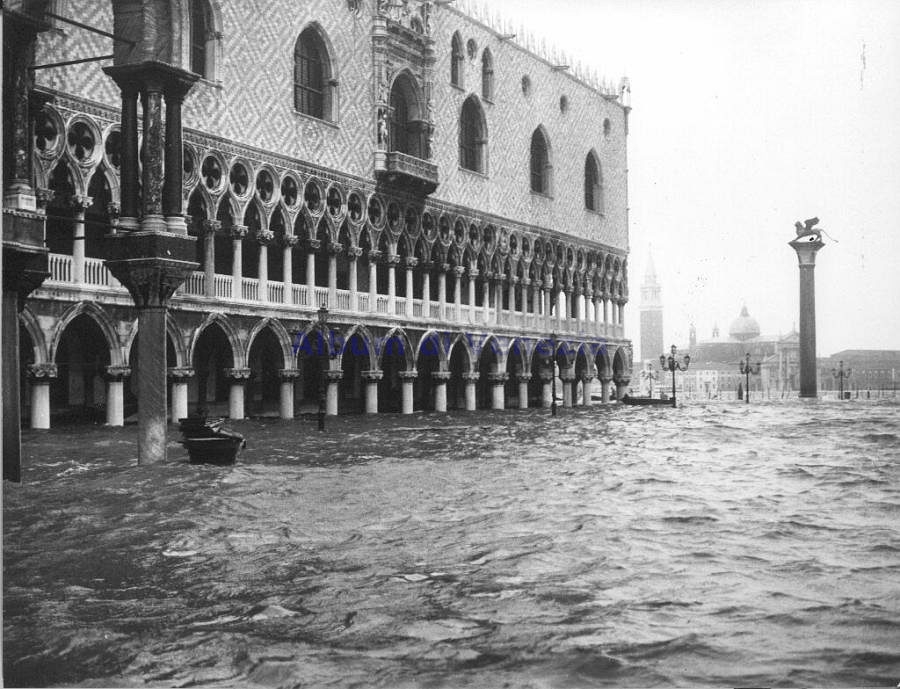
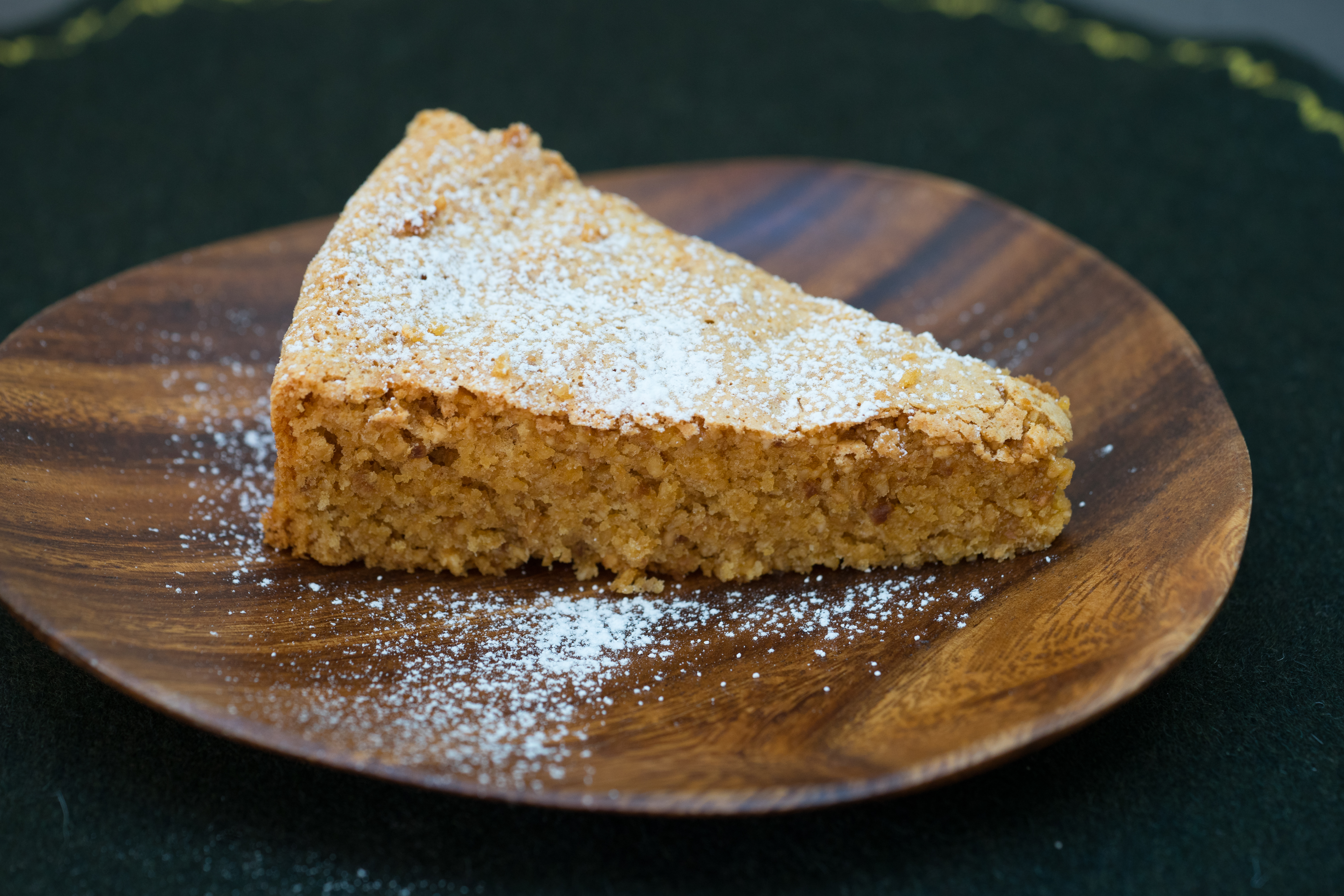
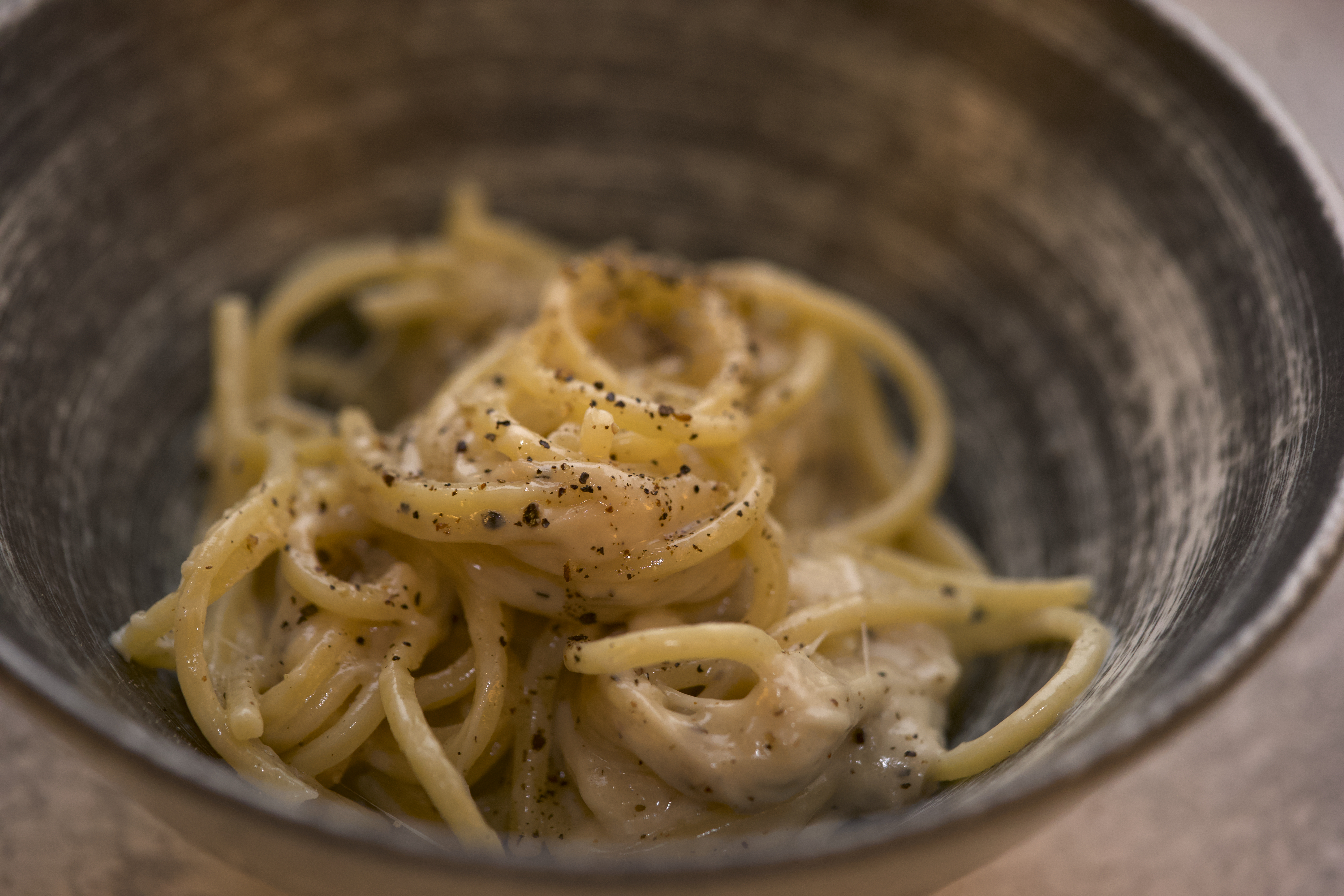
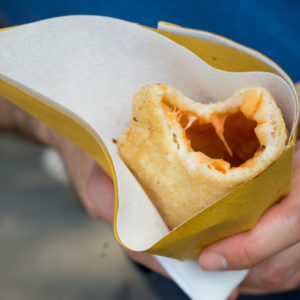
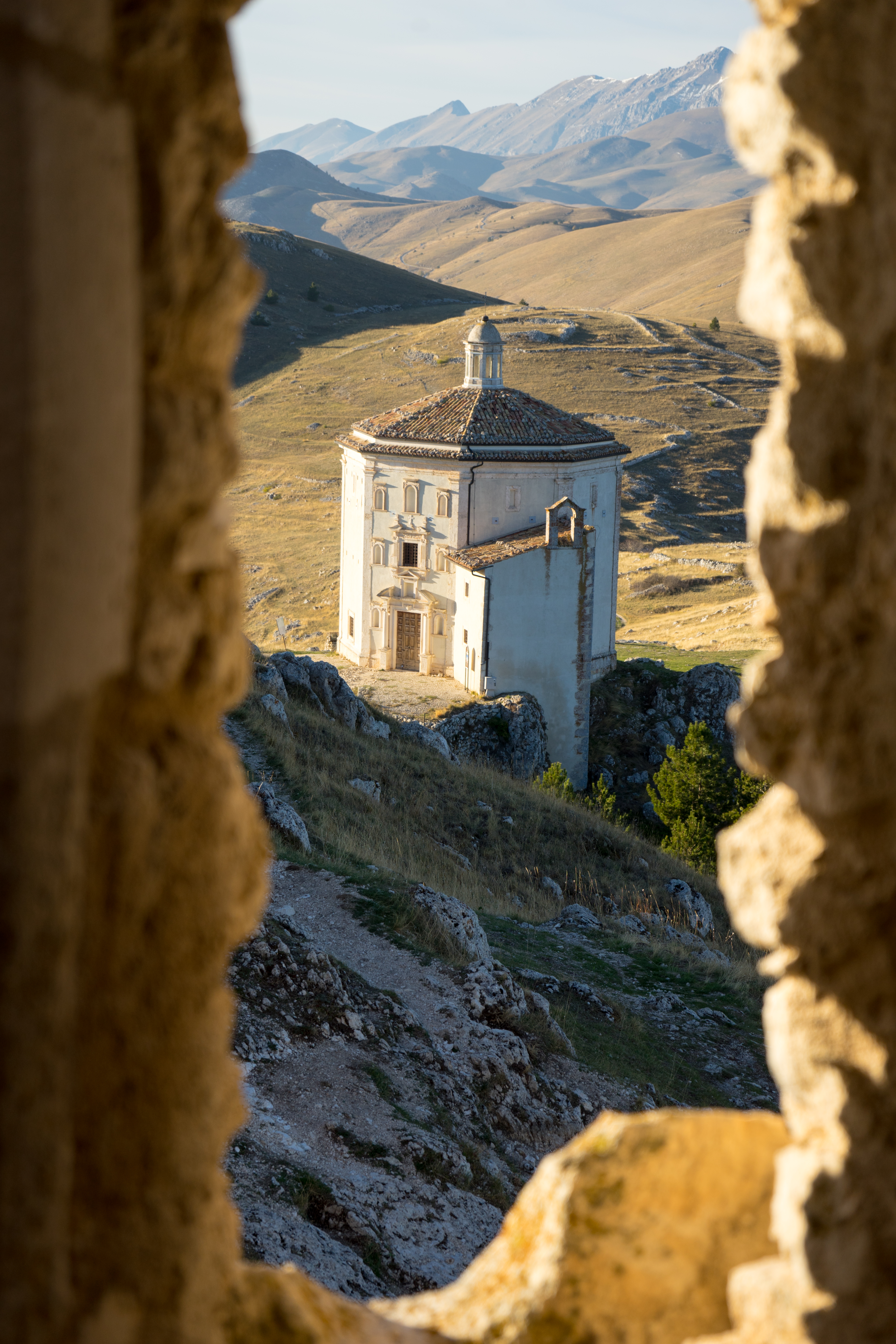
Leave a Reply